I have to admit that Sandy and I have a grave addiction. We became cemetery enthusiasts as a result of writing the two volumes of Where Did They Put the Guillotine? Part of our research required us finding various people in Paris cemeteries, past and present (we certainly didn’t want to tell you Jean-Paul Marat was buried somewhere and low and behold, he wasn’t there—we actually never did find him but I suspect he’s buried under the parking lot of Église Saint-Étienne-du-Mont).
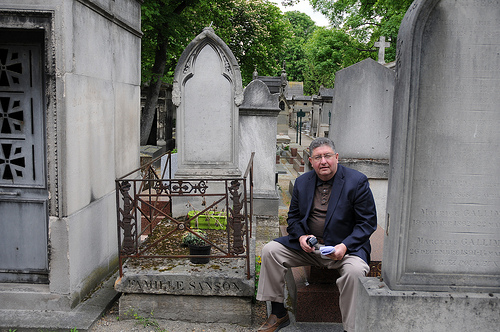
Years ago, during one of our trips to Paris, we started by visiting some of the more well-known cemeteries (e.g., Père Lachaise, Montmartre, and Montparnasse) and then in subsequent trips, moved on to several lesser known cemeteries (e.g., Picpus and Versailles). At some point during our many visits to Paris, Sandy managed to find her way down into the Catacombs (I have claustrophobia so I didn’t go and if you suffer from it, you shouldn’t go). Once she ascended the stairs back to the living, we hopped on a Métro and visited several famous parish cemeteries—at one, we were hoping to find Louis XVII’s grave (like with Marat, we were unsuccessful).
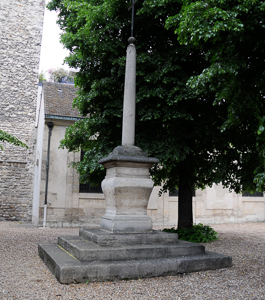
While the permanent residents of these Paris cemeteries are the main draw for visitors, it is easy to become infatuated with the architecture and symbols of the memorials: from the simplest of markers to the most ornate structures you’ll ever see in a grave yard. It seems there are memorials built in architectural styles compatible to every conceivable era: Art Nouveau, Art Deco, Gothic, Romanesque, Classical, Egyptian, Italian Renaissance, Baroque, Modern, and others. Then there is a second overlapping theme to each memorial: the funerary architecture adorning the grave. Join me as I take you through a quick explanation of some of the most common symbols and icons used in cemeteries. Knowing what they mean can fill in a lot of information about the resident who lies below.
Did you Know?
I never met Mr. Louis Wilson but if I had, I think I would have liked him (for those of you who know me, I like people with a good sense of humor). Mr. Wilson passed away in 1991 at the age of sixty. He’s buried in Whiskeytown, California and his grave is marked with two tablets: a photograph of Mr. Wilson and his epitaph which reads, “Here Lies Louis Ovell Wilson. Wanted To Be Buried Face Down So The World Could Kiss His Ass.” I think Mr. Wilson was probably a curmudgeon but hey, at least he was a humorous one. Based on his epitaph, I suspect Mr. Wilson didn’t place any value on symbolism and it’s likely he is having the last laugh.
Tombs, Sculptures, Memorials
Besides the mausoleum, the oldest funerary monument is the sarcophagus. The remains of the deceased lie inside their sarcophagus. These are typically found in the large European churches. My favorite is Saint-Denis where the French kings, queens, and their relatives were laid to rest in beautiful sarcophagi with carved marble recumbent statues on top. It’s too bad they all got dumped out during the French Revolution and thrown in the river or a giant pit. Another famous example is Napoléon’s tomb in Paris. He lies inside six coffins. The first is made of tin, next is mahogany, then two lead coffins, an ebony one, and then the final coffin we all see—oak.
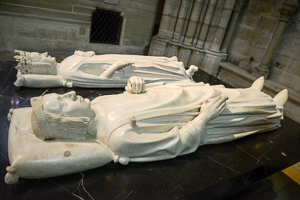
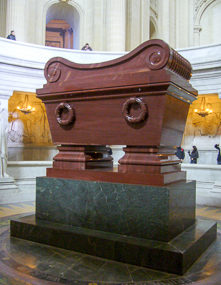
A sarcophagus tomb (different than above) usually has legs to it or without legs, a rounded or tapered base. The resident’s remains are not inside but rather buried below the memorial. The simplest type of sarcophagus tomb is the chest tomb. It is very plain, no ornamentation, and basically, a rectangular box. Table and pedestal tombs stand above the underground grave. An altar tomb is an ornate chest tomb and my favorite is Saint Geneviève’s altar tomb located in the Paris church, Saint-Étienne-du-Mont. Her remains met the same fate as the kings and queens during the French Revolution. I guess the citizens forgot she was their patron saint of Paris and not royalty (they also got confused on Notre-Dame’s statues when they cut off all the heads thinking they were kings).
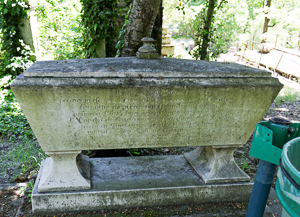
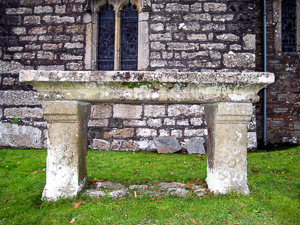
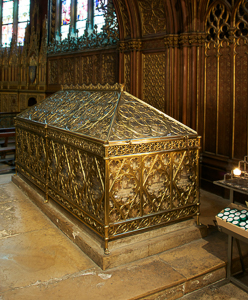
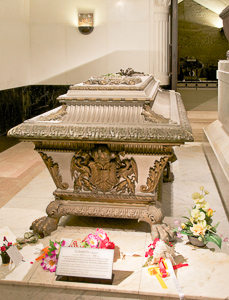
Cemetery Symbolism
Certain cemetery symbols are quite well known. We all know angels are one of the favorites. The angel is totally friendly. They are a heavenly messenger carrying messages from God and are your guides to Heaven. Who can’t smile when looking at those cute little chubby baby angels? Speaking of cute little kids, a sculpted sleeping child is the Victorian symbol for death. Favorite symbols for children’s graves include the lamb and daisies. Sometimes the family will commission an artist to sculpt the child’s portrait for the grave.
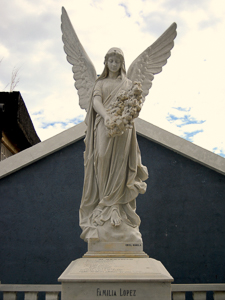
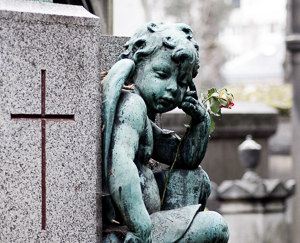
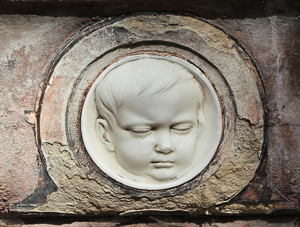
Sculpted flowers seem to be big for the deceased (who picks this stuff out—the dying or their relatives? I suppose it’s likely to be the person who pays for it). The lily and rose seem to be the most popular flowers. The lily represents innocence and purity while the rose is romantic, passionate, and beautiful. Poppies symbolize eternal sleep and I imagine might be quite popular on the grave stones of South American drug lords. When you see representations of flowers or plants, look closely for broken stems. This means someone died unexpectedly.
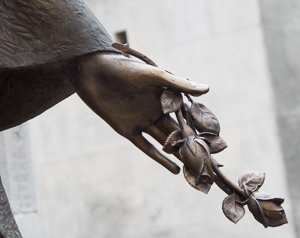
In many cemeteries, the occupants or their survivors have decided to memorialize an organization, religion, or occupation. So, you will frequently see the organizations’ emblems or logos. Examples are the Daughters of the American Revolution, American Legion, Freemasons, Star of David, Grand Army of the Republic, and the Camp Fire Girls (okay, you may not see this one too often but they are out there). Or perhaps, if you were a big shot sports announcer, how about a giant microphone on top of your grave?
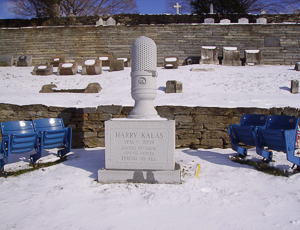
What do you think when you see two hands shaking? It’s a symbol that the deceased is being welcomed into heaven. Look close and see if one hand is male while the other is female. Why is the angel dropping flowers? It’s because they are spreading their blessings. You may encounter the Egyptian influence—this was once very popular in Paris. One is the symbol of the “all-seeing eye”or, “Eye of God.” You’ll recognize it immediately. It’s on the back of our one dollar bill and is one of the better-known symbols used by the Freemasons. Another favorite Egyptian monument is the obelisk. Did you know if the top of the obelisk is truncated, it means the resident below it met a violent death? By the way, truncated columns and broken tree limbs have the same meaning while a tree stump indicates a life cut short. The lotus (presumably from the Nile River) symbolizes creation and birth. A scarab might adorn a grave and you’ll know it’s there as a symbol of life’s renewal.
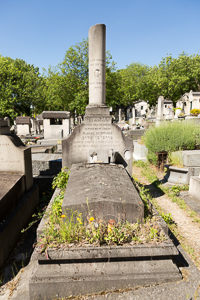
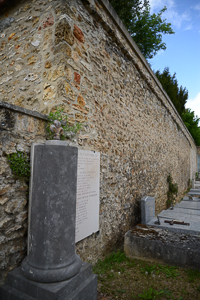
Sometimes, letters appear on the grave stone. If you see the Alpha and Omega letters, it symbolizes the beginning (Alpha) and the end (Omega). These were the first and last letters of the Greek alphabet. Perhaps you’ve seen the cross inside a crown? The cross symbolizes suffering while the crown represents eternal rewards. This symbolism was used quite extensively by the Knights Templar.
What are you to make of the upside-down torch? It means the soul of the deceased is still burning in the afterlife. When you see a harp, look hard for the broken string. It represents a break in mortal life (same goes for lyres). As far as animals go, if you see a horse sculpted into the stone, is it white or black? The horse is a symbol for death while the color represents either good (white) or evil (black).
If you see a hummingbird (typically on a child’s grave), it’s just a decoration—no symbolism at all. The rabbit represents humility, gentleness, and self-sacrifice (especially for those pregnancy tests). Doves are popular and typically adorn the graves of women who die young. This is an easy one: the lion represents strength while the dog symbolizes loyalty. Many objects (e.g., urns, balls, columns) might appear to be draped with a cloth. This is the symbol for mourning (the urn itself symbolizes the soul). The draped urn was very popular in Victorian cemeteries. In European cemeteries, you might run across some headstones with an engraved Hammer and Sickle. You’re right—no mistaking this symbolism—this person was a die-hard Communist.
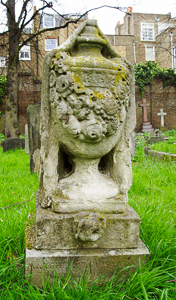
In the older cemeteries (i.e., 17th−and 18th−centuries), tombstones have typically weathered badly and it’s difficult to make out the inscriptions. However, the winged or flying skull is usually pretty easy to see. This signifies the fleetingness of life and the soul soaring into the afterlife. The flying hourglass is similar to the winged skull but it indicates the swiftness of time’s passage (as parents, we understand that one).

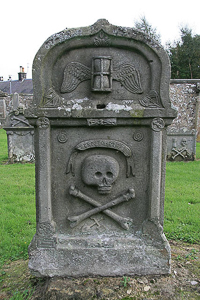
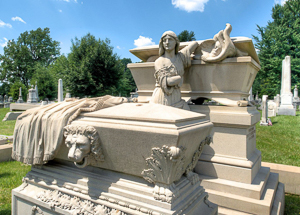
One Last Bite of Cemetery Symbolism
Despite being warned not to travel through the mountains of Colorado during the winter, Alfred (or Alferd as he called himself) Packer (1842−1907) and five other miners set off from Utah in early February 1874 and headed for the gold country near Breckenridge, Colorado. Two months later, only Mr. Packer emerged alive from the mountains. Eventually, he admitted he killed the others and ate them to stay alive. Convicted and sentenced to hang, Mr. Packer received a second trial after the higher courts threw out his original conviction. He was again found guilty and sentenced to forty years but less than two years later in 1901, Mr. Packer was paroled. He died in 1907 and is buried in Littleton, Colorado. Mr. Packer is known as the “Cannibal of Colorado” and in 1968, students at the University of Colorado Boulder named their cafeteria the “Alferd G. Packer Memorial Grill” with the slogan, “Have a friend for lunch!”—again, there’s that sense of humor I like. They had to remove it once they learned Mr. Packer had become a vegetarian before he passed away (it always pays to do one’s homework). Here is a photo of Mr. Packer’s grave stone. Do you notice something missing? Look at the upper right corner of the stone monument. Someone has eaten the corner. Now how’s that for symbolism? Learn more about Alfred Packer’s story here.
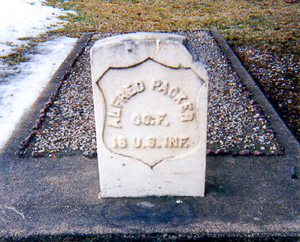
No Regrets
One of my favorite singers, Édith Piaf, had a hit song in 1960 called Non, je neregrette rien or, “No, I Don’t Regret Anything.” Listen to Edith here. I think I’m going to have this French song title as the epitaph on my grave stone. It’s a lot better than the epitaph Mr. Wilson used.
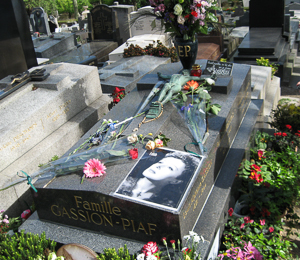
Recommended Reading
Keister, Douglas. Stories in Stone: A Field Guide to Cemetery Symbolism and Iconography. Salt Lake City: Gibbs Smith, Publisher, 2004.
Keister, Douglas. Stories in Stone: A Field Guide to Paris Cemeteries and Their Residents. Salt Lake City: Gibbs Smith, Publisher, 2013.
Nice books with great images. The second book will be a competitor to my future book, Where Did They Bury Jim Morrison the Lizard King? A Walking Tour of Curious Paris Cemeteries. The major difference is I’ll take you to visit people who really aren’t famous and well-known but have some of the most interesting life stories.
What’s New With Sandy and Stew?
If you read one of the recent blogs (Rendezvous with the Gestapo), you’ll recall the story of Sgt. Hilton Hilliard. The genesis of this blog was when his daughter contacted me to ask if I knew where her father’s cell might have been. She explained that as a downed airman wearing civilian clothes, he was interrogated and held by the Gestapo in Paris for four months. Before he died in 1985, he told Ann that he had carved his name into the wall of his cell and now she wanted to see it for herself. Well, we thought he had been held at Gestapo headquarters in what today is the Ministry of Interior. The individual cells are still there and prisoners’ graffiti still adorns the walls. We finally obtained a digital image history of all the inscriptions from the French officials but did not see his. It seems we were searching in the wrong place. About six weeks went by and I began to do some research for one of the stops in the next book, Where Did They Put the Gestapo Headquarters? I began to re-read a book and on page 115, first paragraph, there it was. The author of Death in the City of Light mentions Sgt. Hilliard and his inscription: “In cell 44 of the Second Division, American Sergeant H. Hilliard scrawled his name, the date “June 1943,” And the words “God Bless America.” Sgt. Hilliard was held for four months in an isolation cell at the infamous Fresnes Prison located just outside Paris before being transferred to a POW camp. Mystery solved! Stay tuned as we try and get into Fresnes Prison (it is still an active prison) and visit cell 44.
Someone Is Commenting On Our Blogs
Thank you to our very good friend, Habib for his kind comments about our blogs. He enjoyed our most recent one, Madame X and Her Strapless Gown. Besides owning a very successful marketing firm in Nashville, Locomotion Creative, Habib is an accomplished artist who paints in Plein Air style. Our family owns many of Habib’s paintings. He likes to paint in the Provence area of France and Northern Italy but we’re trying to convince Habib to go to Paris and paint (click here to see Habib’s work). By the way, Habib designed our Stew Ross Discovers™ logo and Tom M. designs all of the maps for our books (I guess this covers our full disclosure requirement). Another shout out to Roger G. from Ireland (our friends from across the globe keep growing which I think is very cool). Roger said, “Thank you for highlighting the contributions of these amazingly courageous women.” This was in response to our 2015 blog entitled Women Agents of the SOE. Roger, I consider it a responsibility and duty to highlight these women. There are thousands of women who risked their lives and the lives of their families. Unfortunately, we will never know their names or stories. If there is a topic you’d like to see a blog written about, please don’t hesitate to contact me. I love hearing from you so keep those comments coming.
Why Would You Want To Buy Our “Walks Through History” Books?
Simple. You like to travel and experience history and historical events. You like to see original buildings that had a significant impact on the people and events of the history you’re engaged with. You want to know the stories behind the brick and mortar in front of you. The walking tour books are meticulously researched so you can go directly to those sites and learn about the building’s history as well as an introduction to some of the more interesting people associated with it.
Thank You
Sandy and I appreciate you visiting with us. We have some exciting things on the horizon and we’ll keep you updated as we go along.
Share This:
Follow Stew:
Find Stew’s books on Amazon and iBooks.
Please note that we do not and will not take compensation from individuals or companies mentioned or promoted in the blogs.
 Walks Through History
Walks Through History
Copyright © 2018 Stew Ross

We the richly carved cadaver tomb of James Rice who was Mayor of Waterford several times in the 15th century. It’s in Christ Church Cathedral. Photo: http://robson-ny.com/Ireland/Waterford/Christ%20Church%20Cathedral/slides/P9030024.html